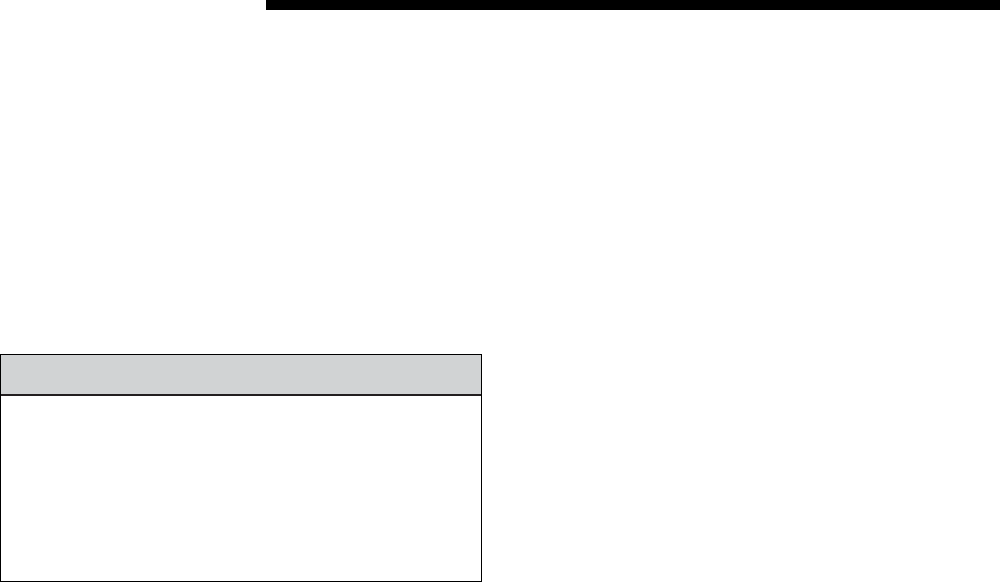
188 STARTING AND OPERATING
Keep this in mind when checking tire inflation
pressure where the temperature is different from the
outside temperature.
For example:
If inside temperature is 68 °F (20 °C) and the outside
temperature is 32 °F (0 °C) then the cold tire inflation
pressure should be increased by 3 psi (0.2 bar), which
equals 1.5 psi (0.1 bar) for every 18 °F (10 °C) for this
outside temperature condition.
Check tire pressures more often if subject to a wide
range of outdoor temperatures, as tire pressures vary
with temperature changes.
Checking Tire Inflation Pressure
The tire inflation pressure should be checked
regularly, i.e. at least each time you refuel the vehicle.
The preferred interval for checking the tire inflation
pressure, however, is before each trip.
Inflation pressures specified on the Tire and Loading
Information placard on the driver’s door B-pillar are
always cold tire inflation pressures. Check and adjust
the tire inflation pressure when the tires are cold. Cold
tire inflation pressure is defined as the tire pressure
after the vehicle has been parked for at least 3 hours or
driven less than 1 mile (1.6 km) at an ambient
temperature of approximately 68 °F (20 °C).
The cold tire inflation pressure must not exceed the
maximum tire inflation pressure molded into the tire
side wall, refer to "Tire Labeling".
If you check the tire inflation pressure when the tires
are warm (the vehicle has been driven for several miles
or sitting less than 3 hours), the reading will be higher
than the cold reading. This is normal. Do not let air out
to match the specified cold tire inflation pressure.
Otherwise, the tire will be underinflated.
WARNING!
Tire pressure may increase during operation.
Never reduce this normal pressure build up or
your tire pressure will be too low.
Underinflated tires wear excessively and/or
unevenly, adversely affect handling and fuel
economy, and are more likely to fail from being
overheated.


















